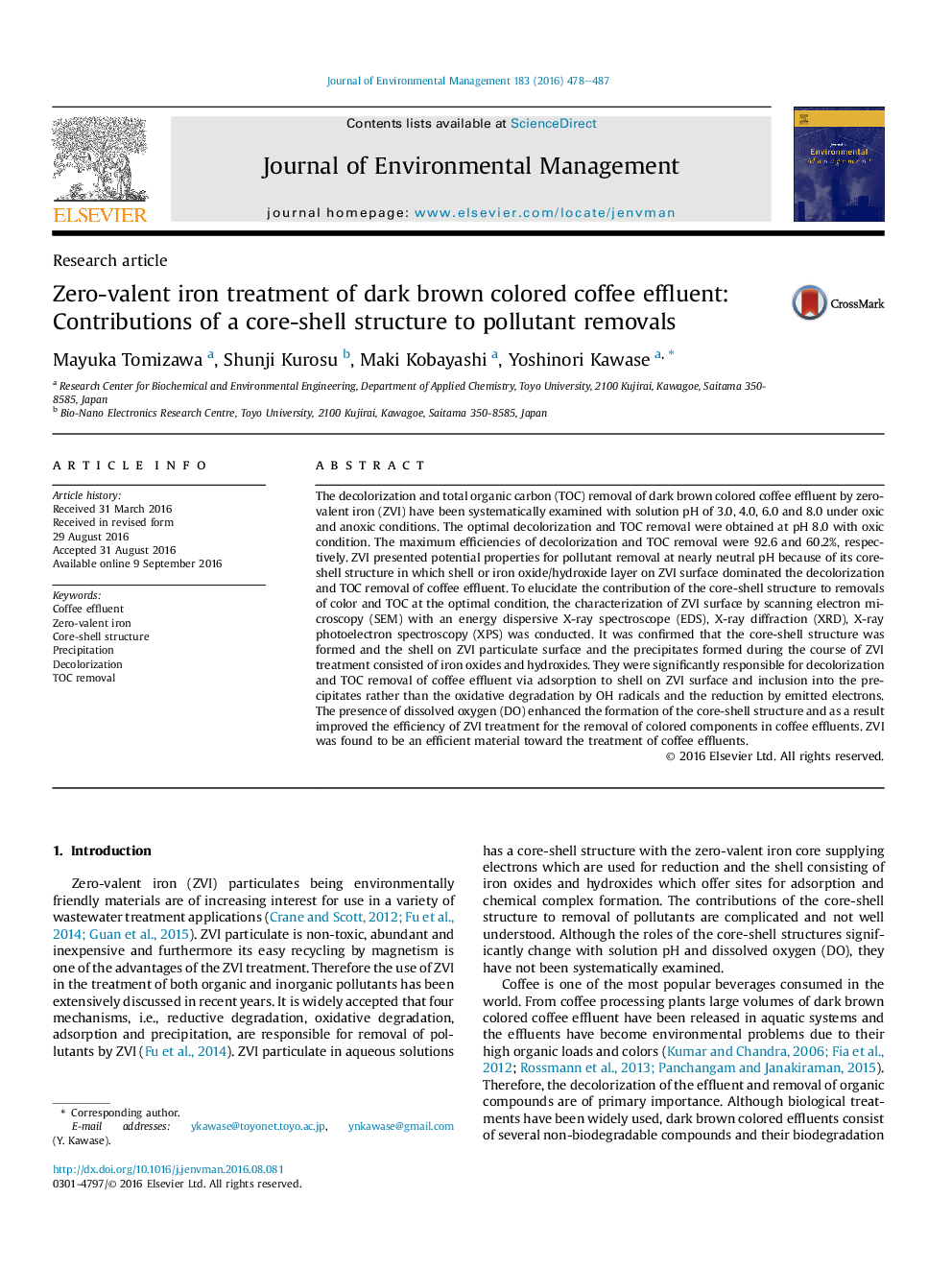| کد مقاله | کد نشریه | سال انتشار | مقاله انگلیسی | نسخه تمام متن |
|---|---|---|---|---|
| 5117183 | 1378118 | 2016 | 10 صفحه PDF | دانلود رایگان |
- Removal of colored components in coffee effluents by zero-valent iron was examined.
- The optimal removal efficiency was obtained at pH 8 with oxic condition.
- The formation of shell consisting of iron oxides and hydroxides was confirmed.
- The core-shell structure of zero-valent iron strongly affected the removal efficiency.
- ZVI was found to be an efficient material toward the treatment of coffee effluents.
The decolorization and total organic carbon (TOC) removal of dark brown colored coffee effluent by zero-valent iron (ZVI) have been systematically examined with solution pH of 3.0, 4.0, 6.0 and 8.0 under oxic and anoxic conditions. The optimal decolorization and TOC removal were obtained at pH 8.0 with oxic condition. The maximum efficiencies of decolorization and TOC removal were 92.6 and 60.2%, respectively. ZVI presented potential properties for pollutant removal at nearly neutral pH because of its core-shell structure in which shell or iron oxide/hydroxide layer on ZVI surface dominated the decolorization and TOC removal of coffee effluent. To elucidate the contribution of the core-shell structure to removals of color and TOC at the optimal condition, the characterization of ZVI surface by scanning electron microscopy (SEM) with an energy dispersive X-ray spectroscope (EDS), X-ray diffraction (XRD), X-ray photoelectron spectroscopy (XPS) was conducted. It was confirmed that the core-shell structure was formed and the shell on ZVI particulate surface and the precipitates formed during the course of ZVI treatment consisted of iron oxides and hydroxides. They were significantly responsible for decolorization and TOC removal of coffee effluent via adsorption to shell on ZVI surface and inclusion into the precipitates rather than the oxidative degradation by OH radicals and the reduction by emitted electrons. The presence of dissolved oxygen (DO) enhanced the formation of the core-shell structure and as a result improved the efficiency of ZVI treatment for the removal of colored components in coffee effluents. ZVI was found to be an efficient material toward the treatment of coffee effluents.
459
Journal: Journal of Environmental Management - Volume 183, Part 3, 1 December 2016, Pages 478-487
